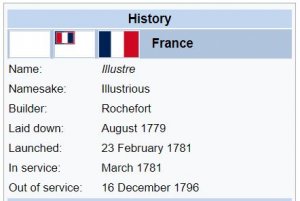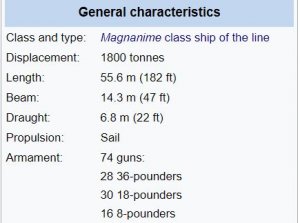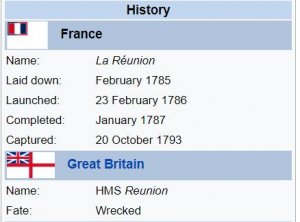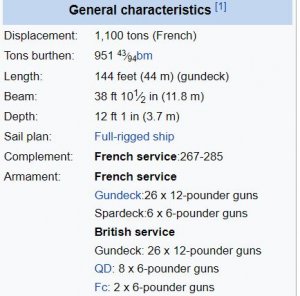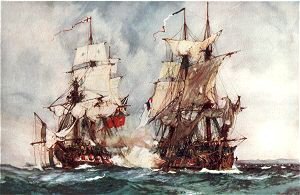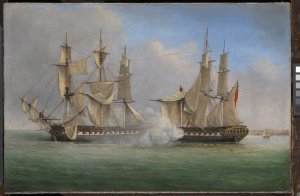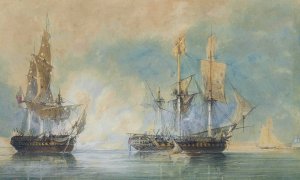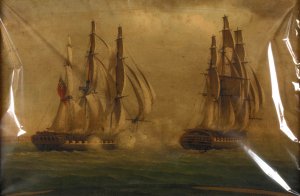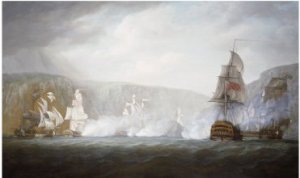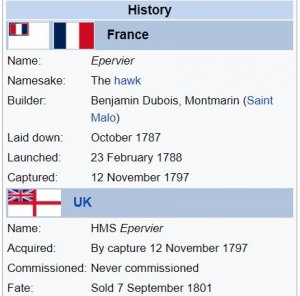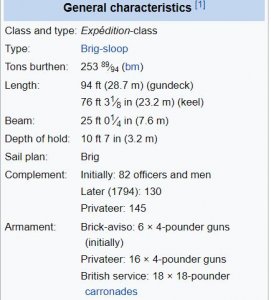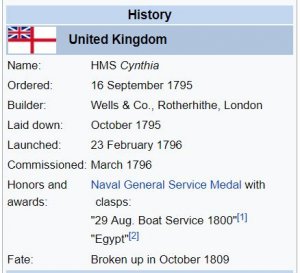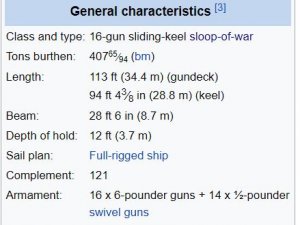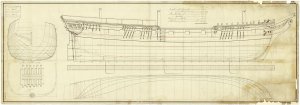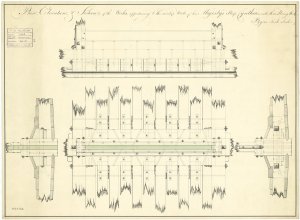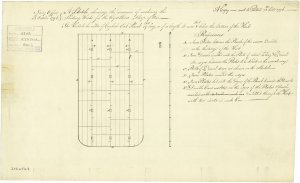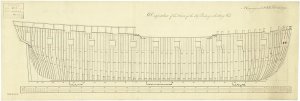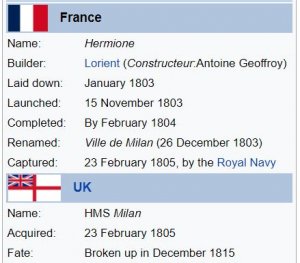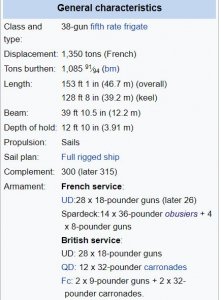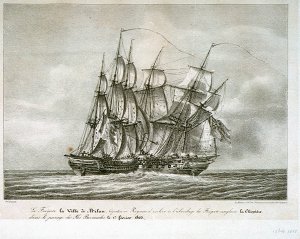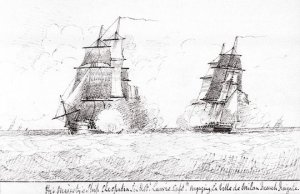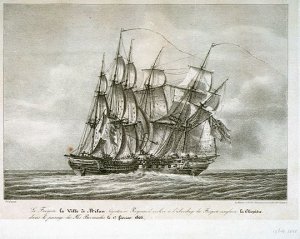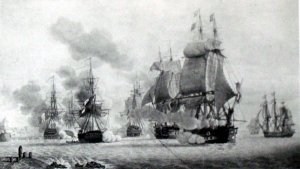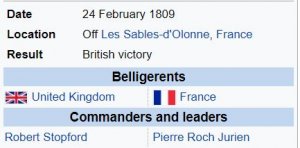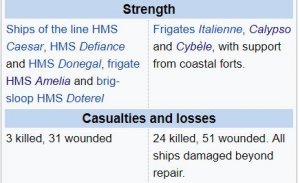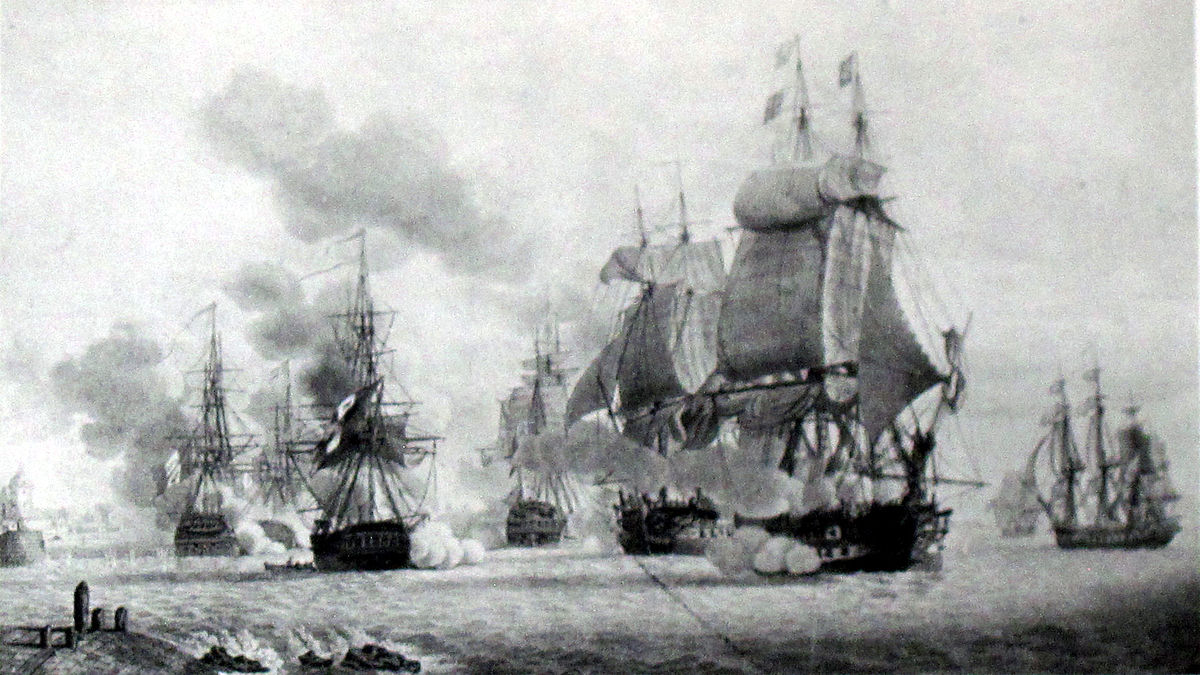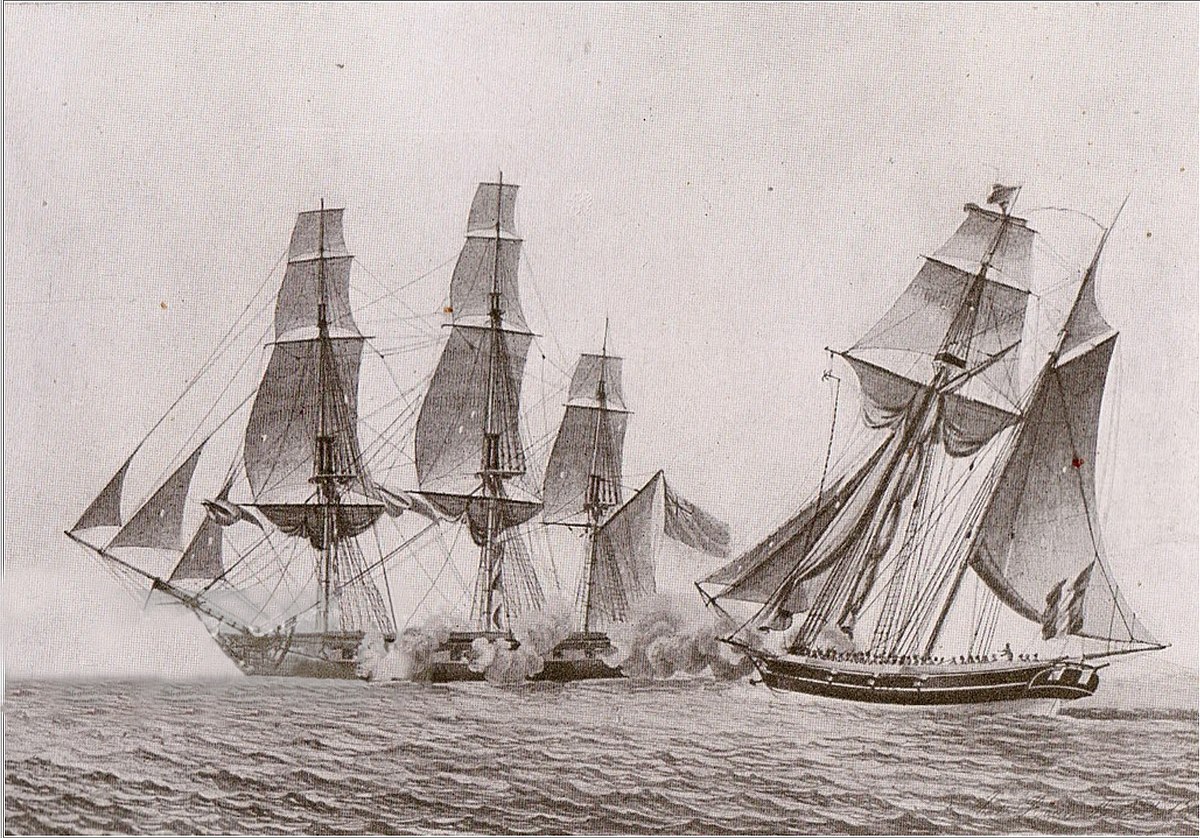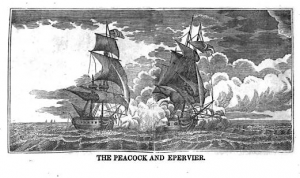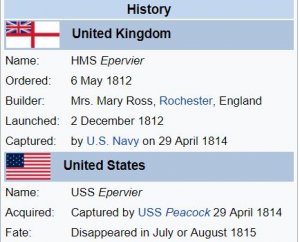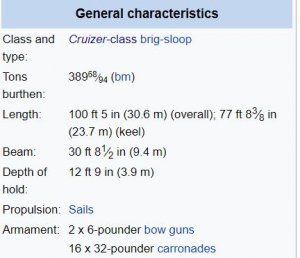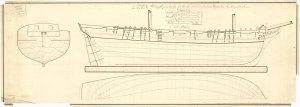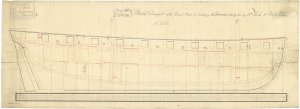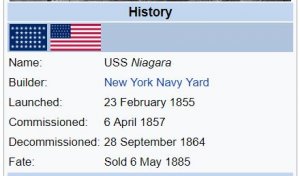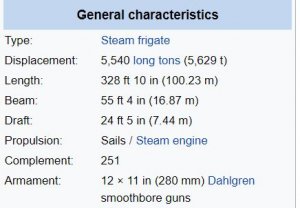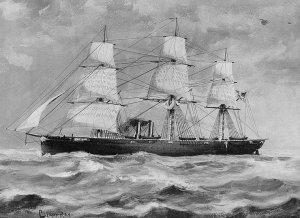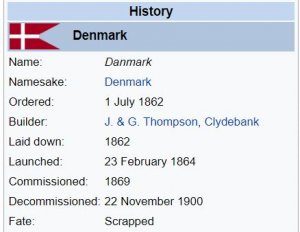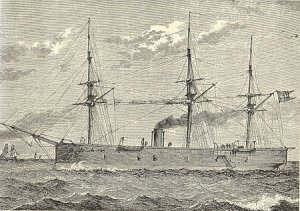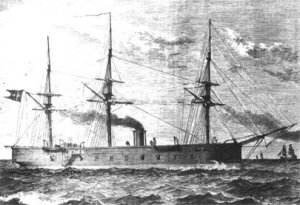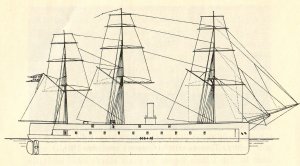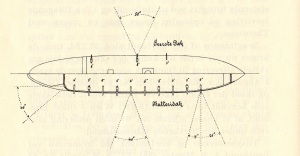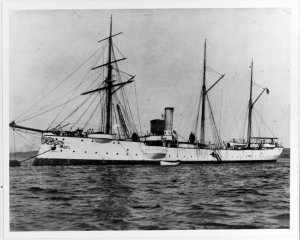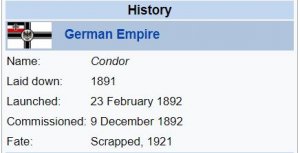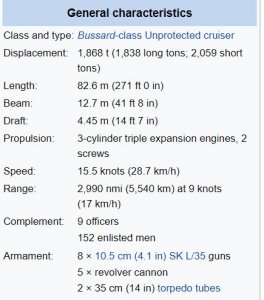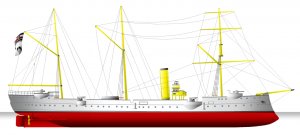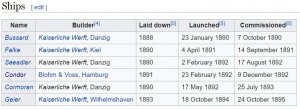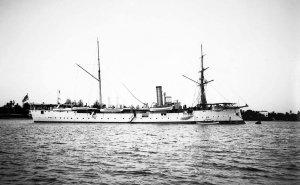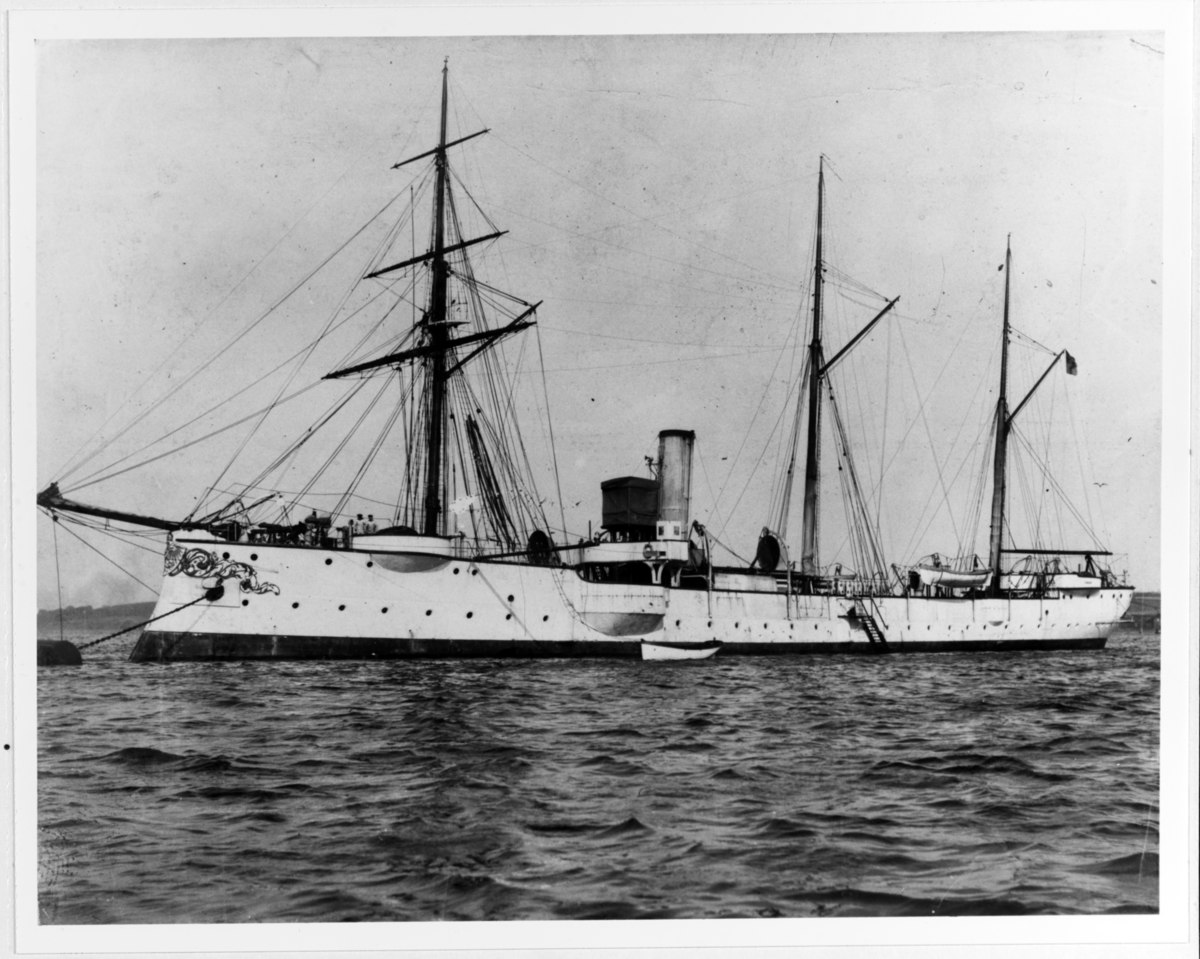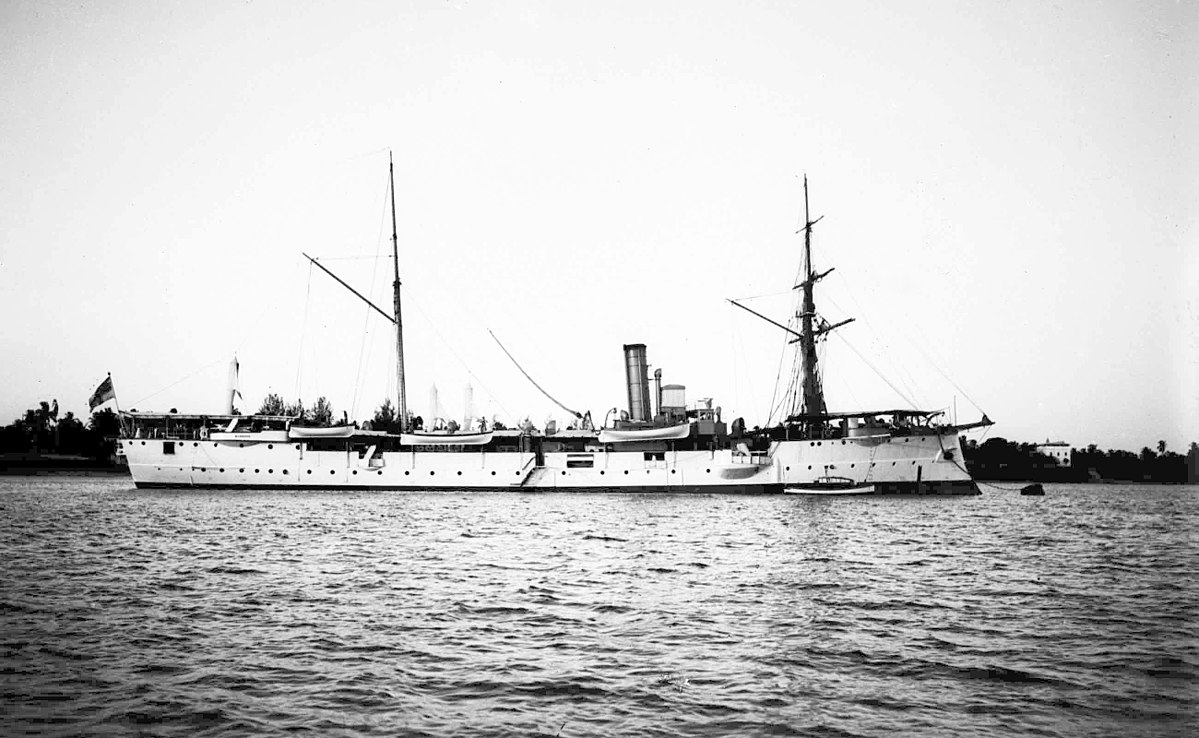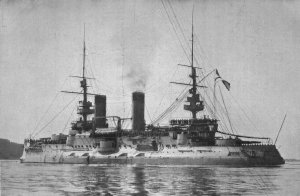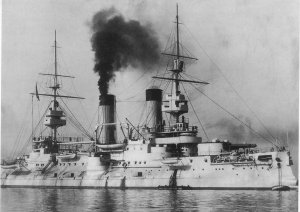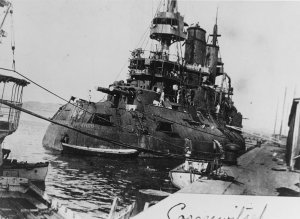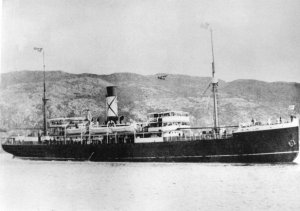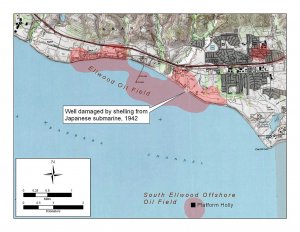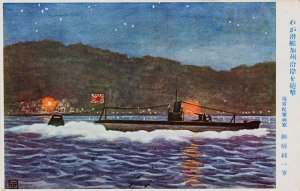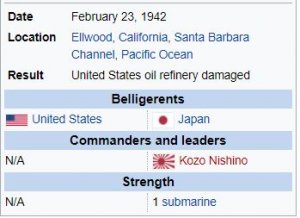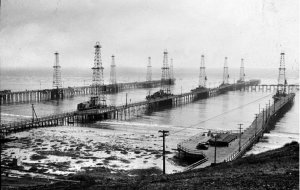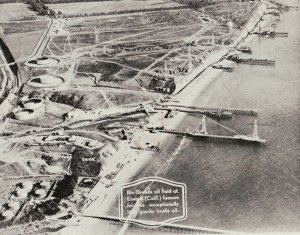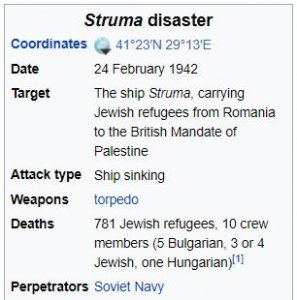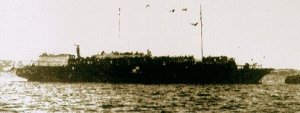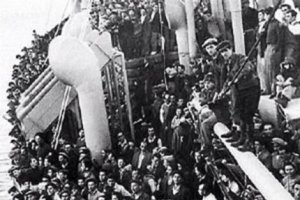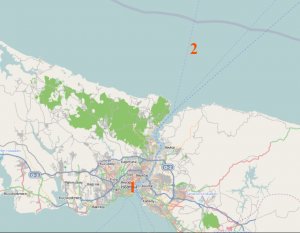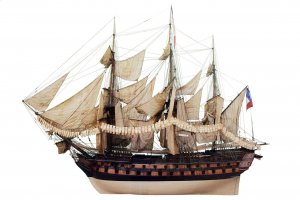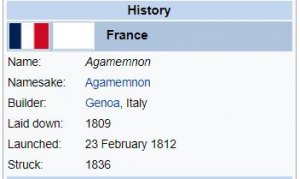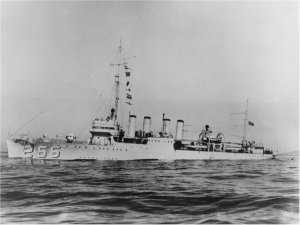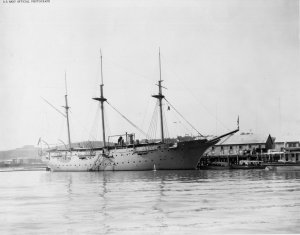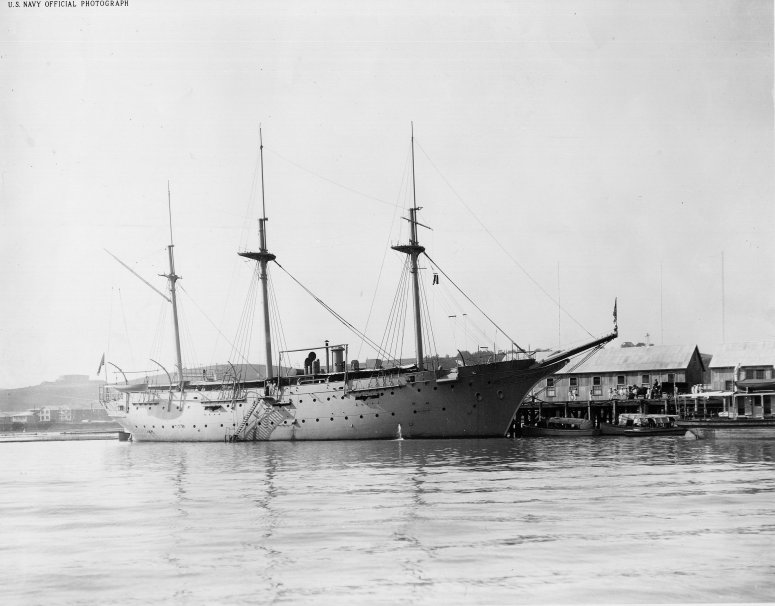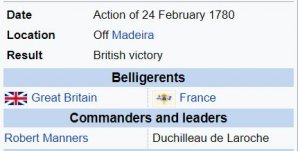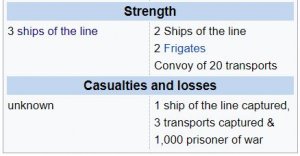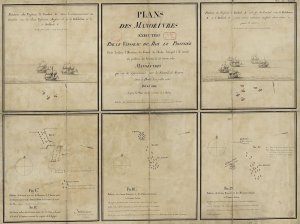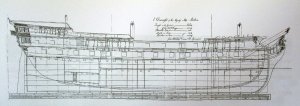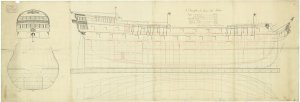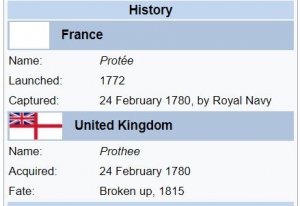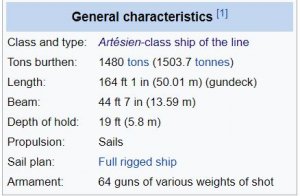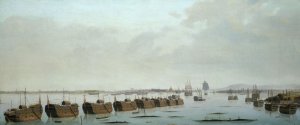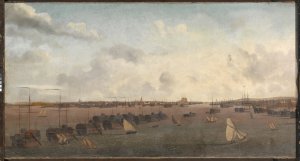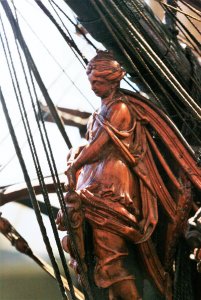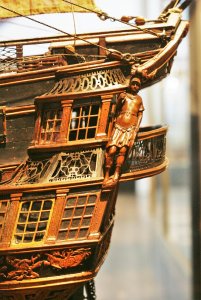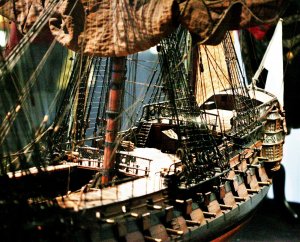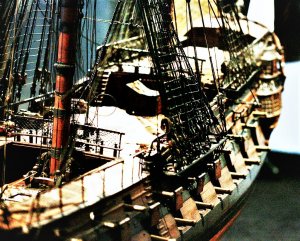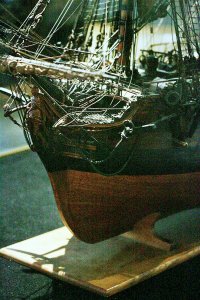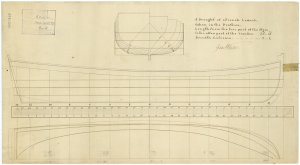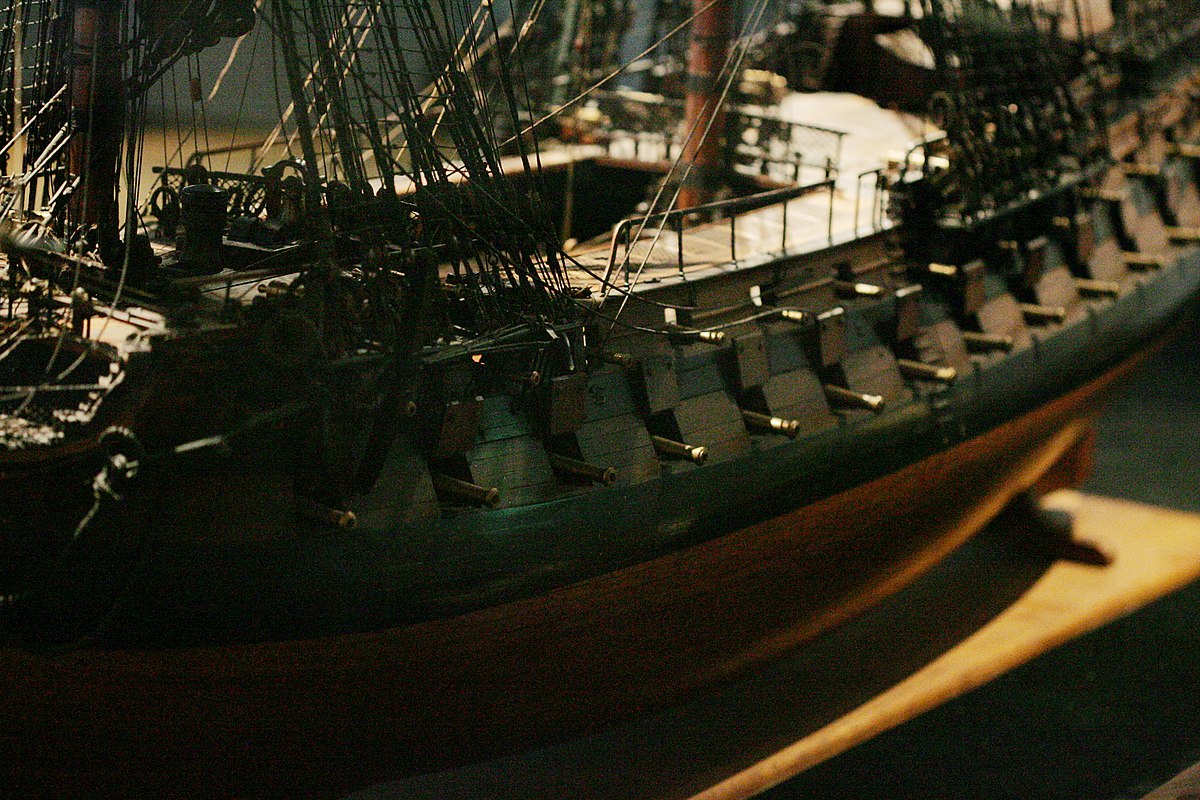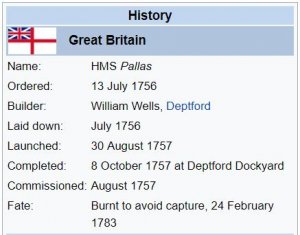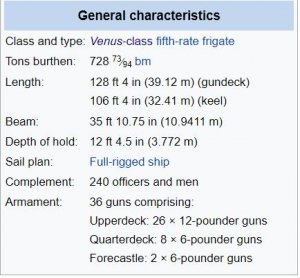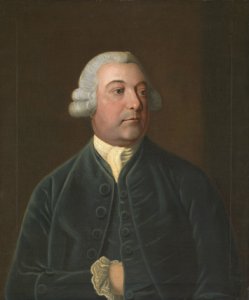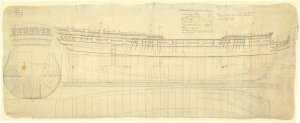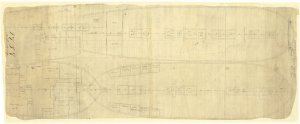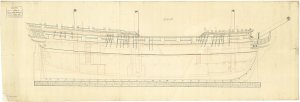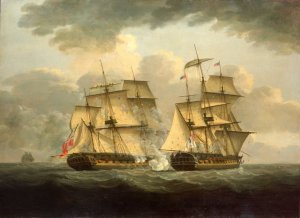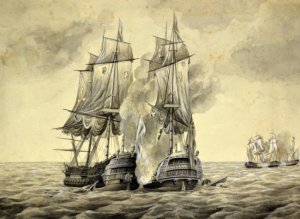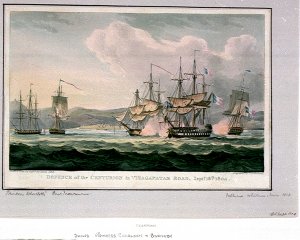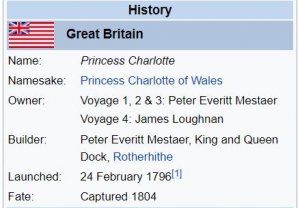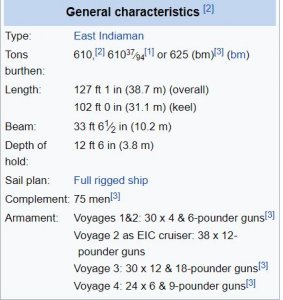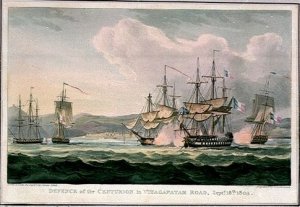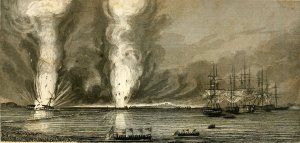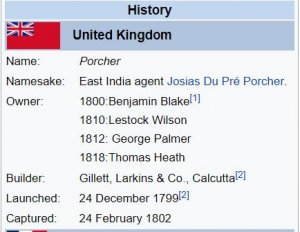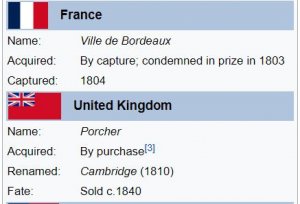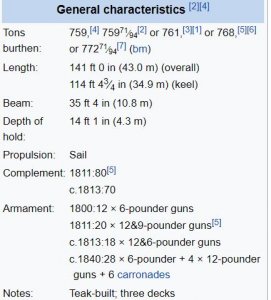Today in Naval History - Naval / Maritime Events in History
23 February 1812 - Jean Bart, a French privateer launched in Marseille in 1807, captured
Jean Bart was a French privateer launched in Marseille in 1807, and commissioned as a privateer by the Daumas brothers. She was the first privateer captained by
Jean-Joseph Roux.
She is depicted in two watercolours by
Antoine Roux the Elder, dated 1810 and 1811.
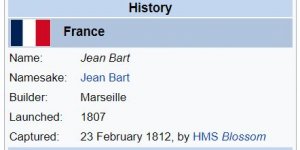
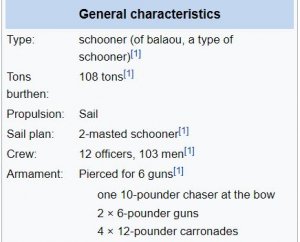 Career
First captain
Jean Bart
Career
First captain
Jean Bart sailed for her first cruise in 1807, returning to Marseille in 1808.
Career under Jean-Joseph Roux
From May 1809 to July 1810, she was captained by
Jean-Joseph Roux.
[1] Jean Bart a 109-man crew, with four 12-pounder
carronades, two
six-pounder long guns, one chase 10-pounder gun mounted on a pivot at the bow, along with 60 rifles, 28 pistols, 33 sabres and 13 spears.
The crew comprised 11 officiers (including one surgeon), 6 masters and 2 second masters (including two crew masters, two master gunners, one captain-at-arms, one master helmsman, one master carpenter and one load master), 17 able seamen (topmen, helmsmen and gunners), 20 seamen, 7 boys, 34 volunteers and 11 others.
First cruise
On 4 June 1809,
Jean Bart captured her first prize of the cruise, a Spanish merchantman laden with wheat, bound for San Feliu from Malta, and sent her to France.
[5] On 13, she captured the British mercantile corvette
Marie-Auguste (?), Joseph Tool, master, which was sailing from Alicante to Messina on ballast
On 19 June,
Jean Bart captured two American ships: the 200-ton brig
Elizabeth, and the 300-ton, 6-gun three-masted ship
Weymouth, Gardner, master, both from Boston and bound for Palerme with loads of sugar, coffee, pepper, tobacco and various other goods. They were sent to France but the arrival of
Elizabeth to France in unconfirmed, while
Weymouth was recaptured. The next day, she captured the British brig
Liffey, from London and bound for Palerme with various goods, which surrendered after a brief artillery exchange, and sent her to France. On 1 July,
Jean Bart was intercepted by a British cruiser, which she narrowly managed to elude after a running battle.
From 3 to 9 August 1809,
Jean Bart encountered four American merchantmen, but as Roux found no cause to seize them, he "regretfuly" had to send them on their way.
On 15 August,
Jean Bart captured the Spanish
pink Nuevo Cordeno, P.A. Bagon, master, which was sailing From Sardinia to Mahón with two passengers and a 5-man crew. The next day, she captured two Spanish ships: another pink, laden with weath, and a three-masted
polacca with unspecified cargo, both sailing from Sardinia to Mahón.
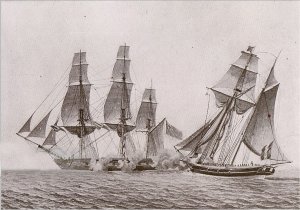 Jean Bart
Jean Bart boarding
Eagle on 9 February 1810
Second cruise
On her second cruise,
Jean Bart captured the British mercantile corvette
Eagle on 9 February 1810.
Eagle, Thomas Walker, master, with a 15-man crew and 14 12-pounder guns, was bound from Palerma and Malta with four passengers and a load of leather, dye, blackwood, iron and various other goods.
Eagle put up a serious resistance and Roux had to board her before she surrendered, both ships sustaining two wounded each.
Jean Bart and
Eagle arrived at
Golfe Juan together on 1 or 2 December, but British cruisers forced them off Marseille and into a hide-and-seek chase; they eventually arrived at Toulon on 11 December.
Roux had the mast of
Jean Bart replaced by 25 December (a first replacement mast was found to be eaten by insects, and the second was too large and had to be worked upon before it would fit).
On 11 March, she captured the British polacca
Valetta, Edward Molley, master, bound from Malta to Bistol with a load of coton and various other goods.
Valetta, of 4 12-pounder guns, had a 21-man crew.
Valetta strongly resisted, first by long-range gunfire and, after one hour, as the ships were closing in to each other, intense artillery and musketry fire;
Jean Bart eventually boarded
Valetta, which only struck her colours after trying to repel the French with bladed weapons.
Valetta had four seriously wounded, and
Jean Bart sustained one killed and seven wounded.
In the morning of 23 June 1810,
Jean Bart encountered a British pink, which she attempted to attack; however, two brigantines soon joined in, exchanged signals with the pink, and engaged
Jean Bart around 3 PM; after a three-hour exchange,
Jean Bart had to limp away with 4 killed, 14 wounded (two of whom would die of their wounds in the next days), and having sustained serious damage to he rigging and hull. The next day, having effected temporary repairs,
Jean Bart captured the British
Catherine, Philippe Medicy, master, bound from Malta to Mahón and Tarragona with a load of coton. However, the mainmast of
Jean Bart was found to be more severely damaged by the battle of the 23rd than previously understood, and Roux set sail to return to Marseille.
On 9 July,
Jean Bart recaptured the Genoan ship
Jesus and Maria, which the British privateer
Intrepid had taken as prize.
Jesus and Maria, Antoine Boggio, master, had been sailing from Ajaccio to
Santa Margherita, near Genoa, with a load of iron, wheat and cheese, when she fell prey to
Intrepid; her prize crew had been attempting to sail her to Malta when
Jean Bart recaptured her.
Third cruise
Jean Bart departed for a third cruise, but on 26 November 1810, the mainmast of
Jean Bart started splitting in two places and threatened to break, and Roux set heading North to return to Marseille and effect repairs. On 28,
Jean Bart encountered the British brig
Purita, Salvatore Antiniolo, master, bound from Matla to Gibraltar and Cadiz with a load of sulfur, oil, ropes, soap and various other goods, as well as two passengers;
Purita had a 16-man crew and 6 guns. Roux sent her to France, where she is confirmed to have arrived.
On 27 January,
Jean Bart captured the American schooner
Zebra, bound from Boston to Tarragona with a load of
staves. The next day, she captured the British 160-ton polacca
Emma, which was returning from London to Malta with no cargo, a 9-man crew and 6 guns.
Emma fired a few cannon shots before surrendering.
On 2 February 1811, she captured the American 156-ton brig
Star, John Holman, master, sailing from Salem to Palerma with a 11-man crew and a load of coffee, indigo, dye, spices and cod. The next day, she seized the Swedish 300-ton
Neutralité (?), John Tornberg, master, which was sailing from London to Cagliari with a 14-man crew and no cargo. In both of these cases, Roux illegally displayed his true colours only after the masters of the ships had arrived aboard
Jean Bart and produced their papers; the capture of
Star was voided by the tribunal, probably for this reason.
Career under Honoré Plaucheur
From October 1810 to February 1812, she cruised under Honoré Plaucheur, with 106 men and 5 guns. On 23 February,
HMS Blossom captured her.
Fate
On 23 February 1812,
HMS Blossom captured
Jean Bart.

en.wikipedia.org
